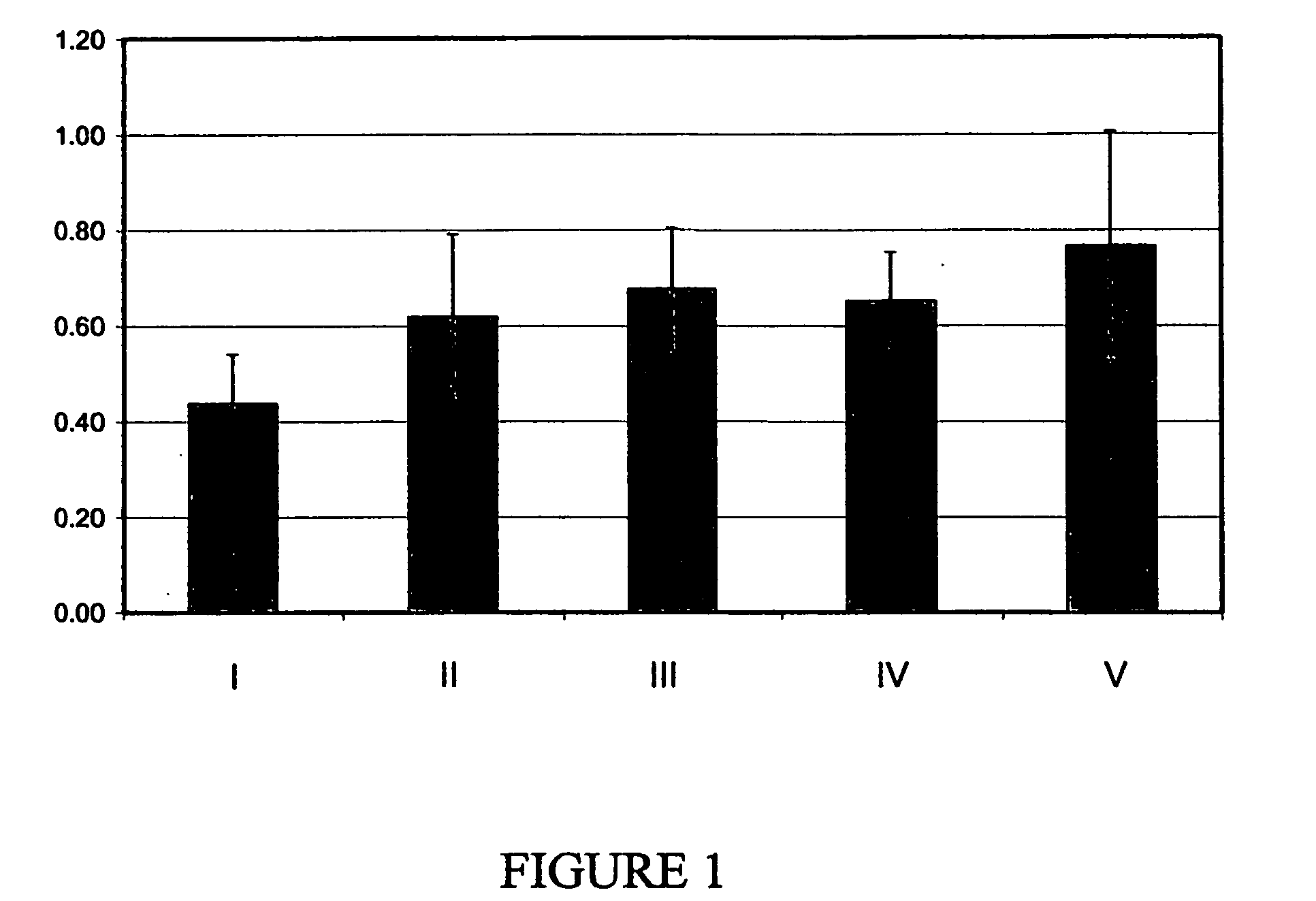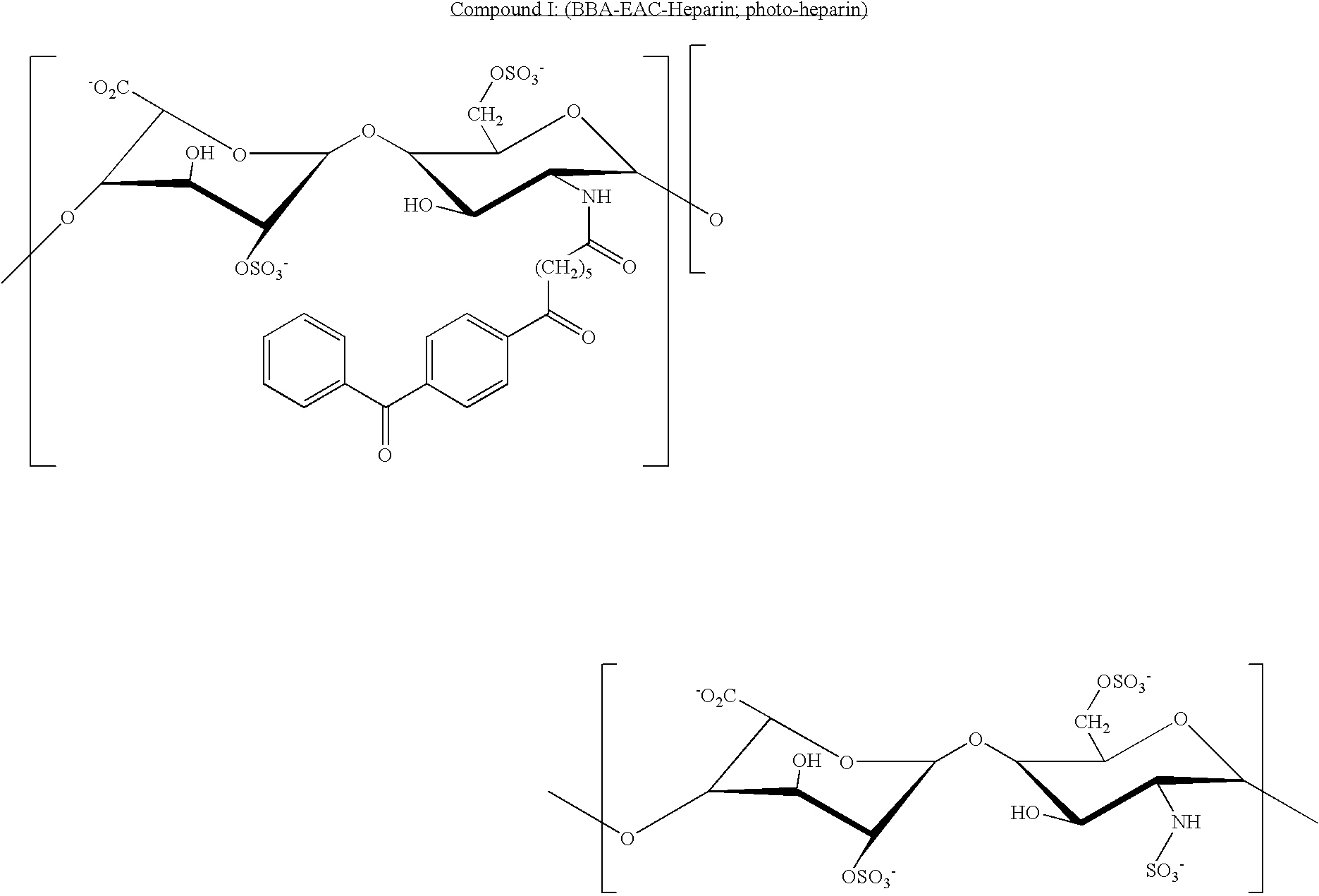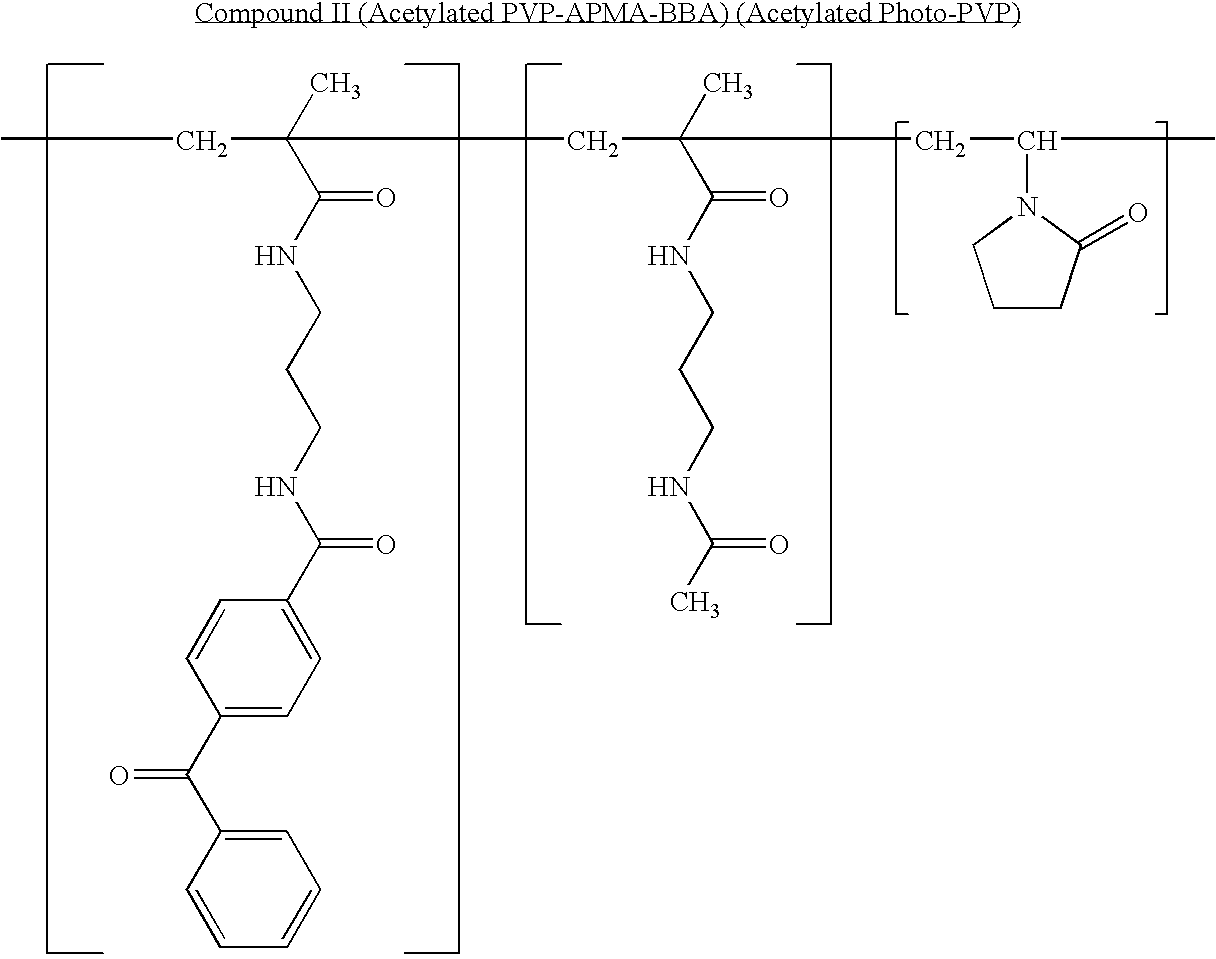Tissue graft materials containing biocompatible agent and methods of making and using same
a biocompatible agent and tissue graft technology, applied in the field of tissue engineering, can solve the problems of endothelialization and thrombogenicity of submucosal tissue implants, threats to the long-term patency of implants, and associated problems, and achieve superior biocompatible properties in use, enhance the function of tissue graft materials, and stable use
- Summary
- Abstract
- Description
- Claims
- Application Information
AI Technical Summary
Benefits of technology
Problems solved by technology
Method used
Image
Examples
example 1
Heparin Coating on Small Intestine Submucosal Tissue Materials
[0148]Substrate: Small intestine submucosal tissue (SIS) was obtained from Oasis Wound Matrix (Product No. 8213-1000-10, distributed by Healthpoint, Ltd. San Antonio, Tex.). The substrates were fenestrated and provided in dimensions of 7×10 cm. Substrates were stored at room temperature until use.
Biocompatible Agent Composition:
[0149]
[0150]A photoreactive derivative of heparin (photoheparin) was prepared by reacting heparin with benzoyl-benzoyl-epsilon-aminocaproyl-N-oxysuccinimide in dimethylsulfoxide / carbonate suffer, pH 9.0. The solvent was evaporated and the photoheparin was dialyzed against water, and lyophilized, and then dissolved in water at 3 mg / ml. The product is referred to as BBA-EAC-heparin (referring to the benzophenone photoreactive group benzoyl benzoic acid, BBA; and the spacer, epsilon aminocaproic acid, EAC).
[0151]Collagenous tissue material (SIS samples) was contacted with biocompatible agent compositi...
example 2
Preparation of Photocollagen
[0161]A photoreactive derivative of type IV collagen (photocollagen) is prepared as follows. Human placental type IV collagen is obtained from Sigma Chemical Co., St. Louis, Mo. A heterobifunctional crosslinking agent (BBA-EAC-NOS) is synthesized and used to photoderivatize the collagen.
[0162]The BBA-EAC-NOS includes a benzophenone photoreactive group (BBA), a spacer (EAC) and an amine reactive thermochemical coupling group (N-oxysuccinimide, NOS). BBA-EAC is synthesized from 4-benzoylbenzoyl chloride and 6-aminocaproic acid. Then the NOS ester of BBA-EAC is synthesized by esterifying the carboxy group of BBA-EAC by carbodiimide activation with N-hydroxysuccinimide to yield BBA-EAC-NOS.
[0163]Type IV collagen is photoderivatized by covalently coupling primary amines on the protein via the NOS ester of BBA-EAC-NOS. The BBA-EAC-NOS is added at a ratio of 10-15 moles of BBA-EAC-NOS per mole of collagen.
example 3
Preparation of Biocompatible Agent including Polymerizable Groups [Collagen Macromer]
[0164]A mixture of Types I and II collagen is obtained from Semed-S, Kensey-Nash Corp. The collagen (1.0 grams) is dissolved in 50 mls of 0.01N HCl. When dissolved, 1.25 grams triethylamine (12.4 moles) is added to the reaction mixture. One gram of acryloyl chloride (11.0 mmoles) dissolved in one milliliter of methylene chloride is added to the reaction vessel and the mixture is stirred for 20 hours at room temperature.
[0165]The reaction mixture is dialyzed exhaustively against diH2O, and the product (collagen macromer) isolated by lyophilization.
PUM
| Property | Measurement | Unit |
|---|---|---|
| time | aaaaa | aaaaa |
| time | aaaaa | aaaaa |
| pH | aaaaa | aaaaa |
Abstract
Description
Claims
Application Information
 Login to View More
Login to View More - R&D
- Intellectual Property
- Life Sciences
- Materials
- Tech Scout
- Unparalleled Data Quality
- Higher Quality Content
- 60% Fewer Hallucinations
Browse by: Latest US Patents, China's latest patents, Technical Efficacy Thesaurus, Application Domain, Technology Topic, Popular Technical Reports.
© 2025 PatSnap. All rights reserved.Legal|Privacy policy|Modern Slavery Act Transparency Statement|Sitemap|About US| Contact US: help@patsnap.com



